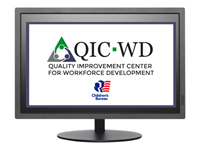Child Welfare Quality Improvement Center for Workforce Development (QIC-WD)
Date of this Version
9-2011
Document Type
Article
Abstract
Child welfare staff are first responders; just like police officer and fire fighters, they are asked to respond to emergency situations with very little information, and by doing so often put themselves at risk. In addition to the very real physical risks involved with responding to a report of suspected child abuse or neglect, there are equally real psychological risks involved with taking care of children and families that have experienced abuse, neglect, family and community violence, and other traumas. Unlike police officers and fire fighters, however, child welfare staff get very little public recognition for the hard work they do. When the child welfare system is in the news, it is often for negative reasons, which serves to increase rather than mitigate the stress and pressure its staff work under.
Secondary traumatic stress (STS) refers to the experience of people – usually professionals – who are exposed to others’ traumatic stories as part of their jobs and as a result can develop their own traumatic symptoms and reactions. Child welfare staff are particularly susceptible to STS because of the vulnerable nature of their clients, the unpredictable nature of their jobs, and their relative lack of physical and psychological protection.
This manual describes a project undertaken by the ACS-NYU Children’s Trauma Institute (CTI) to mitigate the impact of STS among child protective staff in New York City, and thereby increase staff job satisfaction, resilience, optimism, selfcare and social support, and decrease staff attrition, stress reactivity and burnout. The Children’s Trauma Institute is a collaboration between the Administration for Children’s Services (ACS), New York City’s public child welfare agency, and the New York University Langone Medical Center’s Family Trauma Research Program. The CTI’s mission is to partner with child welfare stakeholders and use trauma-related knowledge in order to improve child welfare practice and outcomes on both the individual and system levels.
We call this project the Resilience Alliance because its goal is to work together with child protective staff to increase their ability to protect themselves and their co-workers. This is not a one-directional training provided to staff, but rather an intervention that is done in partnership with child welfare at all levels, from the front line to the senior leadership of the agency.
Included in
Industrial and Organizational Psychology Commons, Performance Management Commons, Public Policy Commons, Social Welfare Commons, Social Work Commons, Training and Development Commons


